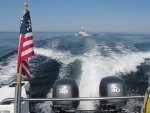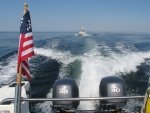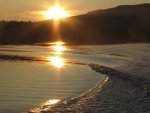starcrafttom
Active member
Hi, So I went back to the show on Monday to spend a little time taking a long look at neat new stuff, if i could find any. Well I found lots of new little things and even picked up some gossip of future releases. So I thought I would share some of them each day. and I hope that some of you will share what you saw. So here is the first one
http://www.interactio.co/optio-fuel
So I ran into the owner inventor of this neat little project. its a simple wireless fuel flow monitor that requires no wires and is more accurate then the flow scan ( which I have on my boat now) it also has a lot more information available to the user. You can monitor it from you wireless device of your choice. It calculates fuel used, fuel remaining, MPH vs GHP to give you your best efficiency and even continuously calculates the highest speed you can run for the least amount of fuel and displays it on the map as your EcoRange optimized cruise. It does all this and a little more, follow the link, for 299.00 dollars. The flow scan is http://www.floscan.com/html/blue/modelselection.php 510 to 900 depending on which model you need. That's per motor. If you are looking at twin diesel you will need two per motor. Thats 299 x 4 or 645 x 4. $1200 or $2550. Thats a big savings. I am considering replacing the flow scan if anyone wants one. make a offer.
ON edit. they have a twin diesel show special for $959.00
http://www.interactio.co/optio-fuel
So I ran into the owner inventor of this neat little project. its a simple wireless fuel flow monitor that requires no wires and is more accurate then the flow scan ( which I have on my boat now) it also has a lot more information available to the user. You can monitor it from you wireless device of your choice. It calculates fuel used, fuel remaining, MPH vs GHP to give you your best efficiency and even continuously calculates the highest speed you can run for the least amount of fuel and displays it on the map as your EcoRange optimized cruise. It does all this and a little more, follow the link, for 299.00 dollars. The flow scan is http://www.floscan.com/html/blue/modelselection.php 510 to 900 depending on which model you need. That's per motor. If you are looking at twin diesel you will need two per motor. Thats 299 x 4 or 645 x 4. $1200 or $2550. Thats a big savings. I am considering replacing the flow scan if anyone wants one. make a offer.
ON edit. they have a twin diesel show special for $959.00



